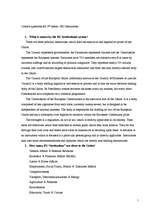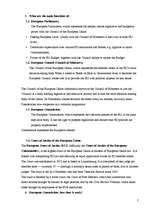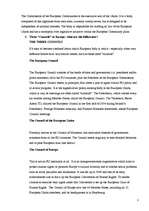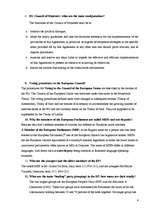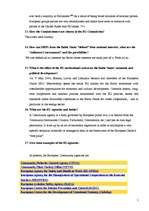-
Institutions of the European Union
2. How many EU “institutions” are there in the Union?
General Affairs & External Relations
Economic & Financial Affairs (Ecofin)
Justice & Home Affairs
Employment, Social Policy, Health & Consumer Affairs
Competitiveness
Transport, Telecommunications & Energy
Agriculture & Fisheries
Environment
Education, Youth & Culture
3. What are the main functions of:
3.1. European Parliament,
The European Parliament, which represents the people, shares legislative and budgetary power with the Council of the European Union
• Passing European Laws –jointly with the Council of Ministers (it has a say in most EU laws);
• Democratic supervision over various EU institutions and bodies, e.g. approve or reject Commissioners;
• Power of the EU Budget: together with the Council adopts or rejects the Budget.
3.2. European Council (Council of Ministers),
The Council of the European Union, which represents the member states, is the EU’s main decision-taking body.When it meets at Heads of State or Government level, it becomes the European Council whose role is to provide the EU with political impetus on key issues.
…
1. What is meant by the EU Institutional system? There are three political institutions which hold the executive and legislative power of the Union. The Council represents governments, the Parliament represents citizens and the Commission represents the European interest. Parlament have 785 members are elected every five years by universal suffrage and sit according to political allegiance. They represent nearly 500 million citizens (the world's second largest democratic electorate) and form the only directly elected body in the Union. The Council of the European Union (informally known as the Council of Ministers or just the Council) is a body holding legislative and executive powers and is thus the main decision making body of the Union. Its Presidency rotates between the states every six months, but every three Presidencies now cooperate on a common programme.

